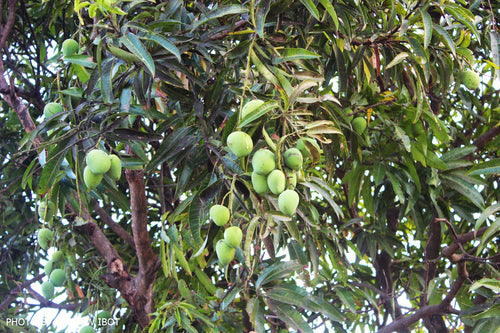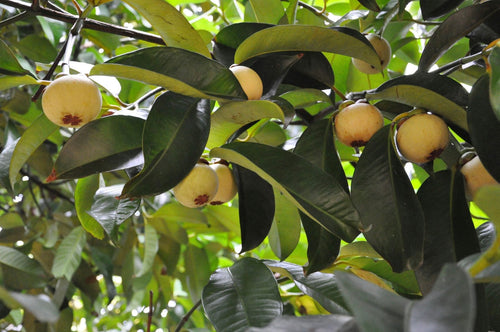Rooted in Teamwork: KBR's Employee Engagement through Tree Plantation
KBR’s tree plantation initiative, part of its employee engagement program, focused on environmental sustainability and team building. Employees active Read more
Project Update 2
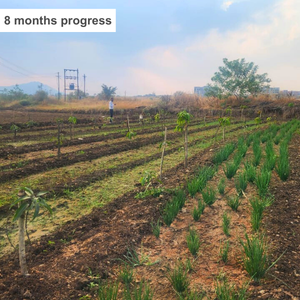

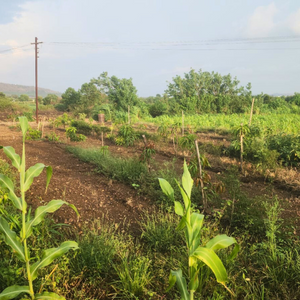
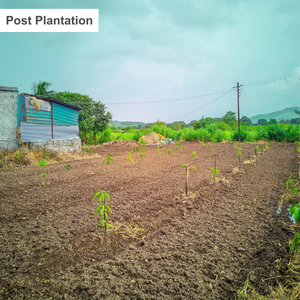




Project Update 1
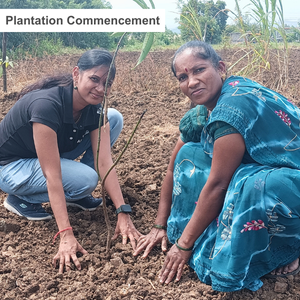
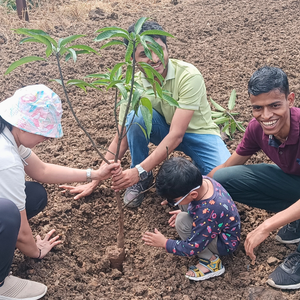
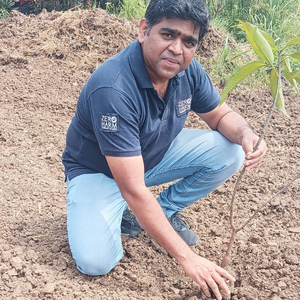

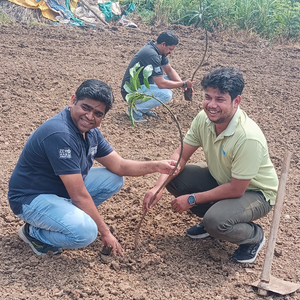


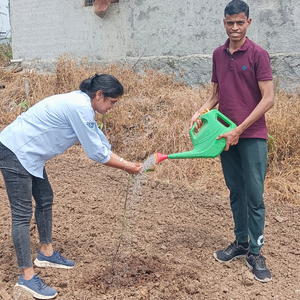

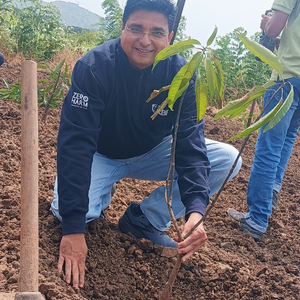
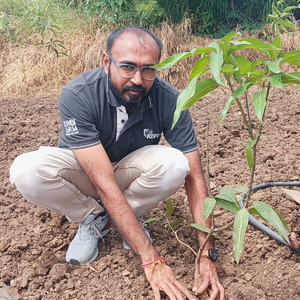
Digital Forest
Forest with 120 Trees planned
Want to plant your tree now?
Plant a Tree @ 299Trees Planted
Rooted in Teamwork: KBR's Employee Engagement through Tree Plantation
KBR’s tree plantation initiative, part of its employee engagement program, focused on environmental sustainability and team building. Employees actively participated in planting native and fruit-bearing trees, contributing to reforestation efforts and biodiversity enhancement. The initiative aimed to reduce the company’s carbon footprint while promoting environmental awareness among staff. By combining hands-on planting activities with educational sessions, KBR fostered a deeper connection to ecological responsibility and corporate sustainability goals, empowering employees to play a vital role in creating a greener future. This initiative reflects KBR's dedication to environmental stewardship and social impact.
KBR’s initiative #SmallStepsGreenerImpact focuses on promoting environmental sustainability through impactful plantation drives. As part of this initiative, KBR encourages its employees and partners to take small but meaningful steps by planting trees, contributing to increased green cover, and improving air quality. The plantation activities not only help combat climate change but also foster biodiversity and create healthier ecosystems. Through active participation and community involvement, the initiative reflects KBR’s belief that even small efforts, like planting a single tree, can lead to a greener, more sustainable future for all.
Project Planning & Execution
No of Trees: 120
Plantation Location: Nanoli Tarf Chakan, Pune, Maharashtra – 410507
Plantation Date: 21st September 2024
Name of Species: Mango
Species Selection & Its Benefits:
The initiative prioritises the planting of native and climate-resilient tree species to ensure long-term ecological sustainability and maximise benefits for local communities. Species selection is carried out in consultation with farmers, aligning with both environmental goals and the socio-economic needs of the region. This collaborative approach ensures high survival rates, integration with existing farming systems, and enhanced community ownership.
The project strategically selected Mango (Mangifera indica) trees for plantation due to their significant ecological, economic, and social advantages. Mango trees are well-suited to the local climate and soil conditions, making them a reliable choice for long-term cultivation. They provide substantial income through seasonal fruit harvests, supporting farmer livelihoods. Additionally, mango trees contribute to biodiversity by attracting pollinators and birds, helping sequester carbon, and preventing soil erosion with their strong root systems.
Beneficiaries Details
|
SN |
Farmer Name |
Google Location |
Village Name |
Plot Size |
Mango Planted |
|
1 |
Shankar Bharathe |
Nanoli |
0.5 acre |
120 |
This initiative has empowered the farmer, Mr. Shankar Bharathe, to adopt agroforestry, allowing him to benefit from improved soil fertility, enhanced water retention, reduced erosion, and a diversified source of income. By integrating trees with agriculture, he has secured an additional livelihood opportunity through fruit trees, ensuring long-term financial stability. This effort not only contributes to environmental sustainability but also strengthens economic resilience, fostering a resilient farming model and contributing to the long-term well-being of the Chakan region.
Planting Methodology and Its Advantages
Agroforestry:
KBR’s tree plantation initiative is based on the agroforestry concept, a sustainable land management practice that promotes environmental conservation while supporting local sustainability efforts. This initiative contributes to long-term ecological balance while enhancing carbon sequestration and biodiversity. Agroforestry helps improve soil health, enhance water retention, and reduce soil erosion, ensuring sustainable land use. Additionally, it reduces dependence on chemical fertilizers, fosters natural pest control, and creates microclimatic benefits, such as temperature regulation, wind protection, and shade for companion crops.
KBR recognizes agroforestry as a strategic approach to environmental sustainability, ecological restoration, and carbon footprint reduction. This initiative reinforces the company’s commitment to responsible environmental practices, contributing to a greener planet and a more sustainable future.
Advantages of Agroforestry
-
Increased Farmer Incomes: This approach helps in increasing the farmer’s income by as much as 3 times. Farmers benefit from diversified income sources, lifting economic resilience.
-
Improved Livelihoods: Agroforestry enhances farmers' resilience to economic and climate-related shocks by creating more sustainable and diversified farming systems.
-
Biodiversity Promotion: Agroforestry supports a diverse range of plants and animals, creating habitats for wildlife and improving ecosystem health.
-
Environmental Sustainability: This model reduces carbon emissions and promotes sustainable land management, aligning with SDG 13 (Climate Action) and SDG 15 (Life on Land).
-
Food Security: Agroforestry enhances agricultural productivity and food availability by integrating fruit-bearing trees with crops, contributing to SDG 2 (Zero Hunger).
-
Carbon Sequestration: Trees planted through agroforestry absorb carbon dioxide, helping reduce greenhouse gas emissions.
-
Climate Resilience: Agroforestry helps mitigate climate change impacts by improving land productivity and fostering biodiversity.
-
Improved Soil and Water Management: Trees enhance soil fertility, reduce erosion, and increase water retention, resulting in more resilient farming.
Activities During Tree Plantation
The tree plantation event at Nanoli Tarf Chakan, Pune, Maharashtra, was marked by a series of engaging and impactful activities that reflected KBR’s commitment to environmental sustainability and employee participation.
With the land prepared and pits pre-dug in advance, employees and volunteers enthusiastically took part in planting saplings and watering the newly planted Mango trees. On-ground experts were present to guide participants in handling the saplings with care and ensuring they were planted correctly.
Team-building and group photo sessions added to the excitement and collective spirit of the day. Overall, the activities fostered a strong sense of environmental responsibility and unity, making the plantation drive not only productive but also deeply meaningful for everyone involved.
Conclusion Elements
Impact
Direct Impact
|
Parameters |
Values |
References |
|
No. of Trees Planted |
120 |
|
|
Green Cover (Acres) |
0.5 |
|
|
Fruit Production Potential (Tons/Year) |
3 |
|
|
Income Generation Potential (Rs/Year) |
1,50,000 |
|
|
Carbon Sequestration Potential (KG) |
20 |
Small to medium-sized trees can sequester around 10–48 kilograms (22–106 pounds) of CO₂ annually. https://onetreeplanted.org/blogs/stories/how-much-co2-does-tree-absorb |
|
Carbon Sequestration by 120 mature trees ( Tons/year) |
2.4 Tons |
No. of Trees x Carbon Sequestration by 1 mature trees per year |
|
Carbon Credit Equivalent |
2.4 |
One carbon credit is equivalent to one tonne of carbon dioxide or the equivalent amount of another greenhouse gas. |
|
Carbon Footprint of an avg Indian Citizen (Tons/Year) |
1.8 |
|
|
Offsets Annual Carbon Footprint of (Adults) |
1 |
Carbon offset by 120 mature trees per year / Carbon Footprint of an avg Indian Citizen per year |
*This impact analysis is forward-looking (An agroforestry project matures in 3-5 years)
Indirect Impact
Community Impact
-
Empowerment of Farmers: By providing training and resources for sustainable farming practices, agroforestry equips farmers with skills to enhance productivity and adapt to environmental changes.
-
Food Security: The integration of fruit-bearing trees and crops ensures a consistent food supply, improving nutrition and reducing hunger within the community.
-
Environmental Awareness: Community involvement in tree plantation fosters a sense of responsibility for environmental conservation and promotes sustainable practices in daily life.
-
Enhanced Social Equity: Agroforestry initiatives foster enhanced social equity by empowering marginalized farmers with sustainable livelihoods, bridging economic gaps, and promoting inclusive community participation in environmental conservation efforts.
-
Resilience to Climate Change: The diverse and sustainable nature of agroforestry helps communities mitigate the impacts of climate change, including extreme weather events, by stabilizing local ecosystems.
-
Health and Well-being: Green spaces created through agroforestry improve air quality and offer a healthier environment, contributing to the physical and mental well-being of the community.
Environmental Impact
-
Carbon Sequestration: Trees act as carbon sinks, absorbing significant amounts of CO2 from the atmosphere, helping to mitigate climate change and reduce greenhouse gas emissions.
-
Soil Health Improvement: Agroforestry enriches soil through organic matter from fallen leaves and roots, improving fertility, structure, and nutrient availability for crops.
-
Erosion Prevention: Tree roots stabilize the soil, reducing erosion caused by wind and water while protecting nearby agricultural fields and water bodies.
-
Biodiversity Conservation: By creating habitats for various species, agroforestry enhances biodiversity, supporting pollinators, beneficial insects, and native wildlife.
-
Water Cycle Regulation: Trees improve water retention, recharge groundwater levels, and reduce surface runoff, contributing to a more balanced and sustainable water cycle.
-
Microclimate Regulation: Agroforestry moderates temperature extremes, reduces wind speeds, and increases humidity, creating favourable conditions for crop growth and ecosystem balance.
Achievements
SDG Goals Achieved through Agroforestry
-
SDG 1: No Poverty – KBR’s initiative supports marginalized farmers by integrating fruit-bearing trees into agricultural landscapes, creating long-term income opportunities and enhancing economic resilience.
-
SDG 2: Zero Hunger – Agroforestry improves soil fertility, enhances crop productivity, and promotes sustainable farming, ensuring better food security for rural communities.
-
SDG 3: Good Health and Well-Being – The planted trees contribute to air purification, reduced carbon emissions, and biodiversity enhancement, fostering a healthier environment for local communities.
-
SDG 4: Quality Education – KBR’s commitment to sustainability includes empowering farmers with knowledge on sustainable land-use practices, conservation, and climate-resilient agriculture.
-
SDG 5: Gender Equality – By encouraging inclusive participation in agroforestry, this initiative supports women’s involvement in sustainable farming and economic empowerment.
-
SDG 6: Clean Water and Sanitation – The planted trees enhance soil moisture retention, reduce water runoff, and aid groundwater recharge, ensuring better water conservation.
-
SDG 8: Decent Work and Economic Growth – KBR’s initiative creates jobs in tree planting, nursery management, and agro-processing, boosting local economies. Promoting sustainable agroforestry businesses fosters entrepreneurship and enhances financial resilience for farmers through diversified income sources.
-
SDG 9: Industry, Innovation, and Infrastructure – By supporting innovative agroforestry practices, KBR promotes sustainable agricultural infrastructure and long-term environmental impact.
-
SDG 10: Reduced Inequality – The initiative empowers small-scale farmers with alternative income sources and sustainable farming training, helping bridge economic disparities.
-
SDG 12: Responsible Consumption and Production – KBR’s commitment to sustainability ensures responsible resource use, promoting organic farming and reducing dependency on chemical inputs.
-
SDG 13: Climate Action – The planted trees act as carbon sinks, absorbing CO₂ emissions and helping mitigate climate change, aligning with KBR’s environmental responsibility goals.
-
SDG 15: Life on Land – By supporting reforestation and biodiversity conservation, KBR actively works towards restoring ecosystems and preventing land degradation.
-
SDG 17: Partnerships for the Goals – KBR’s collaboration with Grow Billion Trees highlights the power of strategic partnerships in driving sustainability, combining expertise, resources, and community engagement for a greener future.
ESG Achieved through Agroforestry:
-
Environmental Impact: KBR’s tree plantation initiative integrates sustainable afforestation with ecological restoration, contributing to carbon sequestration, climate change mitigation, and improved air quality. By enhancing soil fertility, preventing erosion, and promoting groundwater recharge, the initiative ensures long-term ecological stability. The plantation also fosters biodiversity by providing habitats for wildlife and strengthening ecosystem resilience, reinforcing the company’s commitment to environmental conservation and responsible land stewardship.
-
Social Impact: KBR has embarked on a unique tree plantation initiative as part of its sustainability-driven gifting program, planting trees to commemorate its valued customers. This initiative not only strengthens business relationships but also creates a lasting environmental impact by promoting sustainability through meaningful contributions to nature. By engaging farmers in plantation activities, the initiative provides income opportunities, supports food security, and enhances rural livelihoods through the long-term benefits of Mango tree cultivation. Additionally, the project fosters women’s employment by involving them in various stages of plantation and maintenance, empowering them with sustainable livelihood opportunities. The initiative also promotes environmental awareness and social responsibility among customers and local communities, aligning business success with sustainable development.
-
Governance Impact: KBR’s collaboration with Grow Billion Trees highlights its dedication to ethical governance, transparency, and measurable environmental impact. This initiative follows expert-led afforestation strategies, structured execution, and adherence to sustainability standards. By ensuring accountability, responsible corporate governance, and stakeholder trust, KBR sets a benchmark for sustainable business practices, reinforcing its commitment to corporate responsibility and environmental stewardship.
Building Communities
One of the most impactful outcomes of KBR’s agroforestry initiative was the sense of connection and shared purpose it fostered among farmers and environmental partners. By supporting tree plantation efforts in Nanoli Tarf Chakan, the initiative became more than just an environmental intervention—it evolved into a symbol of responsibility, collaboration, and long-term commitment to a greener and more sustainable future.
-
Empowering Farmers: Farmers were not just involved in the plantation process; they played an essential role in ensuring the trees thrive, benefiting from sustainable agroforestry practices that provide long-term economic and ecological advantages. This initiative empowered them with knowledge, resources, and an additional source of income, reinforcing their connection to environmental conservation and sustainable agriculture.
-
Fostering Partnerships: The initiative brought together KBR, Grow Billion Trees, and local farming communities, highlighting the power of collaboration in creating lasting environmental change. Through this partnership, the plantation was executed with expertise, precision, and a focus on long-term sustainability, ensuring that the trees not only grow but also contribute to biodiversity, carbon sequestration, and improved soil health.
-
Creating a Ripple Effect: KBR’s tree plantation initiative inspired a deeper appreciation for sustainability, encouraging businesses and individuals to support green efforts in meaningful ways. By taking proactive steps towards environmental stewardship, KBR set a strong example for corporate responsibility, demonstrating that sustainability and business success can go hand in hand. The initiative has the potential to influence more organisations to integrate environmental action into their core values, creating a ripple effect of positive change.
This initiative reinforced that true sustainability is built through collective action. It was not just about planting trees, it was about planting trust, fostering collaboration, and cultivating a shared vision for a greener, more resilient future.
Commitment by Grow Billion Trees
-
Ensuring Tree Survivability: GBT prioritizes native species, continuous monitoring, and soil health improvement using organic fertilizers. These efforts ensure sustainable growth and benefit the farmers and communities.
-
Transparency & Accountability: GBT provides detailed reports on tree growth, survival rates, and carbon benefits, using geo-fencing and regular updates to maintain transparency and effectiveness.
-
Sustainable Plantation Efforts: GBT implements projects that balance environmental, social, and economic goals, addressing issues like urban heat islands and degraded farmlands. These efforts promote ecological balance, livelihoods, and long-term climate resilience.
-
Enhancing Ecosystem Health: By selecting native species and creating diverse habitats, GBT enhances biodiversity and ecosystem resilience, ensuring long-term ecological health and supporting wildlife.
-
Long-Term Impact: GBT’s initiatives tackle environmental challenges, enhance rural livelihoods, foster climate resilience, and promote sustainable development while reducing carbon footprints.
Acknowledgment
We at Grow Billion Trees extend our sincere gratitude to everyone who played a role in the success of the agroforestry plantation project in Nanoli Tarf Chakan, Pune, Maharashtra. This initiative, which harmonizes environmental conservation with community empowerment, would not have been possible without the collective dedication of visionary organizations and passionate individuals.
To KBR: We extend our sincere gratitude to KBR for its invaluable support and commitment to environmental sustainability through the #SmallStepsGreenerImpact plantation initiative. Your dedication to creating a greener, healthier planet is truly commendable.
This initiative at Nanoli Tarf Chakan, Pune, Maharashtra, stands as a testament to KBR’s vision of making a positive environmental impact through thoughtful and responsible actions. Your contribution has not only added to the region’s green cover but also promoted biodiversity, soil health, and community awareness around sustainable practices.
We deeply appreciate KBR’s leadership, participation, and belief in the power of small steps to drive meaningful change. Thank you for partnering with us in this journey towards a more sustainable future.
To Mr. Shankar Bharathe: Your trust and commitment to adopting agroforestry practices have been truly inspiring. By integrating Mango trees into your farming systems, you have not only enhanced the land's fertility but also contributed to sustainable agricultural practices. Your efforts to improve the ecosystem and the livelihoods of future generations are commendable. We are honoured to be part of this transformation and are excited to see the positive impact you continue to make.
To Our Ground Partners and Volunteers: Your expertise, passion, and tireless efforts have ensured the successful execution of this project. Through our collective dedication to sustainability, we have demonstrated that strategic partnerships and shared environmental responsibility can lead to tangible, long-term benefits for people and the planet.
Through this collaborative effort, we have taken meaningful steps toward restoring ecosystems, strengthening rural economies, and promoting responsible environmental stewardship. This marks the beginning of an enduring commitment to a greener, more sustainable future, and we look forward to continuing this journey together.
Thank you for your unwavering support and dedication to sustainability.
Closing Remarks
The plantation initiative at Nanoli Tarf Chakan, Pune, Maharashtra, under KBR’s #SmallStepsGreenerImpact campaign, marks a significant step towards environmental restoration and sustainable development. By planting 120 Mango trees, this effort contributes not only to increasing green cover but also to enhancing biodiversity, improving soil health, and supporting long-term climate resilience.
Such initiatives highlight the importance of corporate responsibility and community engagement in addressing environmental challenges. KBR’s proactive approach and commitment to sustainability serve as an inspiring example for others to follow.
As we look ahead, this plantation drive stands as a lasting symbol of what can be achieved when thoughtful action meets purposeful intent. Together, with continued collaboration and care, we can build a greener, healthier future for generations to come.
Together, we grow a greener tomorrow!
Trees for Corporates
Trending
Most Popular
1. Tree Plantation Benefits
Why plant a tree? Because they’re nature’s multitaskers! KBR’s tree plantation efforts aren’t just about adding greenery—they're about boosting biodiversity, improving air quality, and reducing that pesky carbon footprint. Trees not only provide shade for a lazy afternoon but also sequester CO2, combat soil erosion, and offer economic benefits. Add agroforestry to the mix, and we’ve got a powerhouse of sustainability. KBR’s employees learned firsthand how planting trees isn’t just good for the planet, it’s great for the soul. And let’s not forget the fruits—literally—from mangoes to guavas, it’s a win-win.
2. Carbon Sequestration
Who knew trees could be your personal carbon-capturing machines? KBR’s agroforestry-focused tree plantation initiative highlights the ultimate climate superheroes—trees! As employees planted native species, they learned how these leafy wonders absorb CO2 from the atmosphere, turning it into biomass and helping to fight climate change. While you’re sipping coffee under the shade, these green giants are hard at work cleaning up the air. It’s like a detox for the planet—brought to you by KBR and Mother Nature.
3. Agroforestry for Sustainable Farming
Agroforestry? More like agrow-winning! KBR’s initiative is rooted (pun intended) in integrating trees with farming practices. By blending native and fruit-bearing trees with crops, employees learned how to maximize land productivity and create a symbiotic relationship between plants. Not only do the trees provide shade and nutrients for crops, but they also promote biodiversity and increase resilience against climate change. It’s farming’s glow-up, and KBR is planting the seeds for a more sustainable future—literally.
4. Biodiversity Enhancement
Who said tree planting was just about the trees? KBR’s agroforestry initiative is like hosting a nature block party. By introducing a variety of trees and crops, the program supports biodiversity by creating habitats for birds, insects, and other wildlife. Employees realized they weren’t just planting trees; they were planting mini ecosystems. As different species flourish, the interconnectedness of nature thrives. KBR's planting not only beautifies the landscape but transforms it into a buzzing hub of life—talk about a vibrant neighborhood!
5. Employee Engagement Through Sustainability
Think planting trees is boring? Think again! KBR turned a typical team-building activity into a meaningful mission with its employee engagement tree plantation initiative. It’s not just digging holes and throwing in saplings; employees were hands-on with agroforestry techniques, understanding how their efforts tie into global sustainability. Working together to create a greener future, they bonded over shared goals of reducing carbon footprints, improving biodiversity, and (bonus!) munching on the fruits of their labor. Teamwork + nature = one leafy success story.
6. Water Conservation Through Agroforestry
Water you waiting for? Agroforestry, of course! KBR’s employees discovered that tree planting isn’t just about going green—it’s about going blue, too. By planting trees in agroforestry systems, they helped conserve water by reducing runoff and enhancing groundwater recharge. Trees act like nature’s sponges, soaking up water and reducing the need for irrigation. Employees got the full scoop on how this clever technique helps with long-term water sustainability, proving that tree planting is as much about saving the planet’s liquid gold as it is about growing forests.
7. Sustainable Livelihoods with Agroforestry
Who knew planting trees could put money in the bank? KBR’s agroforestry initiative isn’t just an environmental win—it’s an economic boost, too. Employees saw firsthand how planting fruit-bearing trees like mango and guava can provide local communities with sustainable incomes. By integrating trees into farmland, farmers get to diversify their produce and increase profitability. It’s a simple but powerful way to boost both livelihoods and land health. With KBR’s guidance, the benefits were as plentiful as the fruits!
8. Climate Resilience Through Tree Planting
KBR’s tree planting isn’t just about pretty landscapes—it’s about preparing for the future. With climate change creating unpredictable weather patterns, the trees planted in KBR’s agroforestry initiative act as natural buffers. Employees learned how trees can protect crops from extreme weather, increase soil stability, and provide year-round benefits. This isn’t just about keeping the land lush and green, it’s about helping local communities build resilience in the face of climate challenges. KBR’s green initiative is a long-term strategy for a more resilient, climate-proof tomorrow.
FAQ
What is the purpose of KBR’s tree plantation initiative?
KBR’s tree plantation initiative aims to enhance environmental sustainability through agroforestry techniques. By integrating trees with crops, we improve biodiversity, soil health, and water conservation while reducing carbon footprints. This initiative also empowers local communities by creating sustainable livelihoods and promoting food security. As part of our employee engagement, it fosters teamwork and environmental awareness, contributing to long-term sustainability goals aligned with global standards.
How does KBR’s tree plantation support agroforestry?
KBR’s tree plantation incorporates agroforestry practices, where trees like mango, guava, and jackfruit are planted alongside crops. This combination creates a sustainable ecosystem where trees enhance soil fertility, conserve water, and protect crops. Agroforestry promotes biodiversity, improves agricultural productivity, and helps in climate resilience. Employees actively engage in these practices, supporting both environmental conservation and economic benefits for local communities.
How does tree plantation contribute to climate action at KBR?
KBR’s tree plantation directly contributes to climate action by sequestering carbon dioxide, reducing greenhouse gas emissions, and mitigating the effects of climate change. By planting trees in agroforestry systems, we create long-term carbon sinks while also improving ecosystem resilience. This initiative not only aligns with KBR’s environmental goals but also supports the UN’s Sustainable Development Goals (SDG 13) for climate action.
What are the benefits of tree plantation for employees at KBR?
KBR’s employee engagement initiative through tree plantation offers numerous benefits. Employees gain hands-on experience in agroforestry, learning sustainable practices while contributing to environmental conservation. It fosters teamwork, environmental responsibility, and personal satisfaction as they directly impact local ecosystems. The initiative also aligns with KBR’s corporate sustainability goals, providing employees with the opportunity to contribute to global climate action and biodiversity enhancement.
What types of trees are planted in KBR’s initiative?
KBR’s tree plantation initiative focuses on planting a mix of native and fruit-bearing trees, including mango, guava, sapota, and jackfruit. These trees are chosen for their ability to support agroforestry systems, improve biodiversity, and provide economic benefits to local communities. By integrating these trees with crops, KBR creates a sustainable land-use model that enhances soil health, conserves water, and supports long-term environmental and social goals.
How does KBR’s tree plantation initiative support biodiversity?
KBR’s tree plantation initiative supports biodiversity by introducing diverse species of trees and crops into the ecosystem. Agroforestry practices create habitats for various wildlife, improve soil health, and increase the resilience of local ecosystems. By planting native and fruit-bearing trees, KBR promotes a balanced environment where both flora and fauna can thrive, contributing to a healthier and more sustainable ecosystem.
How does KBR’s tree plantation initiative contribute to local livelihoods?
KBR’s tree plantation initiative boosts local livelihoods by promoting agroforestry practices that integrate fruit-bearing trees with crops. These trees provide additional sources of income for farmers, offering produce such as mangoes and guavas. This sustainable approach not only enhances agricultural productivity but also creates long-term economic benefits for local communities, contributing to food security and poverty reduction.
How does KBR ensure the sustainability of its tree plantation initiative?
KBR ensures the sustainability of its tree plantation initiative by adopting agroforestry techniques that promote long-term environmental health. We focus on planting native and fruit-bearing trees that are well-suited to local climates and ecosystems. Our approach improves soil fertility, conserves water, and supports biodiversity. Additionally, we involve local communities and employees in maintaining these plantations, ensuring that the benefits continue for future generations.
How does KBR’s tree plantation initiative address water conservation?
KBR’s tree plantation initiative integrates agroforestry practices that significantly aid water conservation. By planting trees alongside crops, we reduce soil erosion, improve groundwater recharge, and minimize water runoff. The deep-root systems of trees retain moisture in the soil, reducing the need for irrigation. This sustainable approach not only conserves water but also enhances crop productivity, aligning with KBR’s environmental sustainability goals.
How does KBR’s tree plantation initiative align with global sustainability goals?
KBR’s tree plantation initiative aligns with multiple global sustainability goals, including the UN’s Sustainable Development Goals (SDGs). Through agroforestry, we address climate action (SDG 13), life on land (SDG 15), water conservation (SDG 6), and sustainable economic growth (SDG 8). Our initiative promotes biodiversity, carbon sequestration, and sustainable livelihoods, reflecting our commitment to global environmental and social responsibility.
- Choosing a selection results in a full page refresh.
- Opens in a new window.


